The Witcher 3: Wild Hunt preview — a giant world of decisions and consequences

The Witcher 3 's world looks very special. Where Skyrim's mountains and forests look like scale models built of Styrofoam and plastic trees, The Witcher 3's high-density detail, crisp textures, and muted early-morning light make its landscapes grander, with a dreamlike quality. In a little theater set up for CD Projekt RED's E3 gameplay demo, I see protagonist Geralt run, ride, and sail through this giant world, never stopping to load unless he succumbs to the lazy temptation of fast travel.
I'm most impressed by the sailing. Setting off alone on a small boat has a romantic appeal, and the choppy seas stretch out to the horizon, making the journey seem truly dangerous. I'm told that in stormy weather, Geralt's boat might smash against the rocks. It's yet to be seen if that means "the ship's bow dynamically splinters apart" or "the boat clips through the rocks and you fall off." Given the fidelity of the rest of the world, I hope for the former.
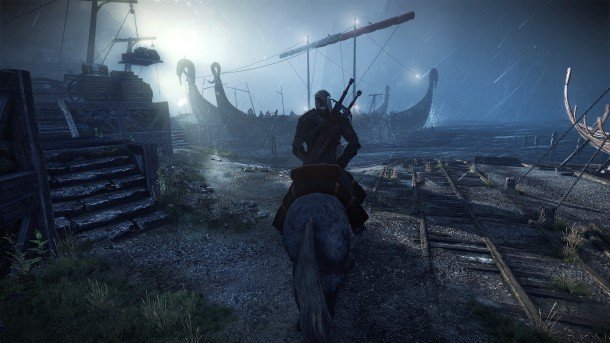
Storywise, the Witcher 3 is directly related to its predecessors, but has been designed to also serve as a standalone entry point to the RPG series. While Geralt will go on "wild hunts"—he's a supernatural monster hunter for hire—the Wild Hunt actually refers to ghostly warriors of real folk lore . In The Witcher 3, the legendary spectral hunters arrive in airships and pillage villages, and as the demonstration begins, Geralt sets off on his main quest to track them down.
CD Projekt RED, however, doesn't want players to bolt through the main storyline. The developer has populated the world with points of interest to distract us. In one instance, Geralt investigates ruins to find a monster several times the size of a moose with antlers to match. His swordplay here is beautifully animated but a bit sloppy in parts—he swings wild combos that never connect, and has a minor clipping problem when he does, sometimes shoving half his arm into the beast. This is an early build, though, and it also struggles with framerate hiccups yet to be optimized out.
Geralt's sparking fire attack and the monster's third-eye hypnotism effects, however, are stunning. And with that hypnosis, the beast escapes, setting up a sidequest to hunt it down.
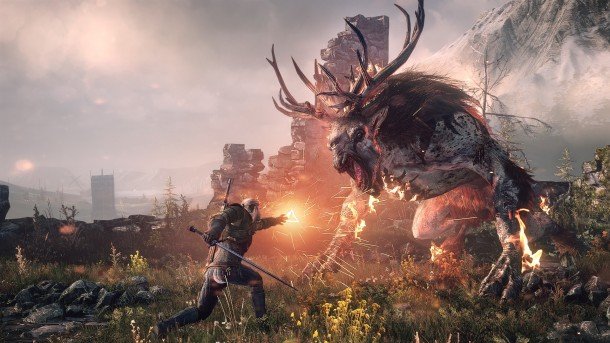
But the demonstration takes us elsewhere, to a town with a monster problem of its own. The elders here believe a forest spirit is angered by their new ways, while the younger leader isn't convinced that progress is causing townspeople to be brutally impaled by trees, their ribcages flayed open for display. Geralt sees his point, and agrees to investigate the "spirit" for as much gold as the town can muster.
In line with the rest of the series, Geralt's quest includes a morally gray decision. Once he discovers that a Leshen is to blame, he can choose to take the elders' side or talk to the young upstart. We take the latter choice, and here's the catch: the monster has marked someone in the town, and can't be killed unless that person leaves or perishes. Using Geralt's magic Witcher sense—something like Batman's detective vision—to find the marked one, the player discovers that it's an innocent girl. Before he leaves for the hunt, Geralt makes it clear that she's not to blame for being marked, but that she has to go.
The biggest gaming news, reviews and hardware deals
Keep up to date with the most important stories and the best deals, as picked by the PC Gamer team.
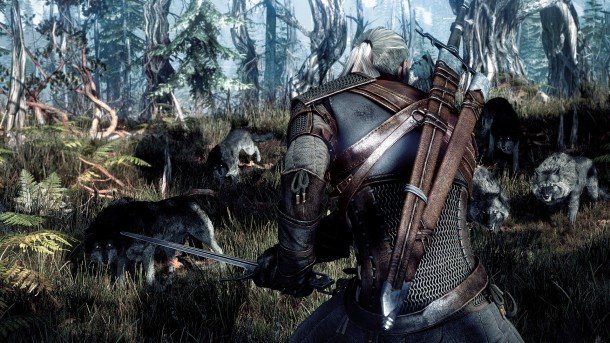
I hoped the player would now be trusted to figure out the monster's weaknesses using Geralt's encyclopedia, but everything except the actual fight is directed by on-screen prompts. We know from reading about Leshens, for example, that they create totems which must be destroyed to reduce their power, and we're instructed do this as soon as we enter the forest, following a murder of crows to each of the monsters' trophies and burning them—it's possible this is just the player's first introduction to the beast, though.
Once that's wrapped up, the player is instructed to find the monster, and a few steps later we're introduced to the creature, a gloriously creepy slender biped made of bone and bark. The fight is brief, again with great variety of animation as Geralt spins, swings, and burns the Leshen's bark, but with some of that action RPG awkwardness that comes from misplaced combo chains.
With proof of the Leshen's death, Geralt returns to the town and... uh oh. The kid did a bad thing—not only did he kill the marked girl, he killed the elders, too. We decide to condemn his actions, and Geralt gives him the most obvious line possible, paraphrased: There's another monster in this village. It seems odd that any of this surprises Geralt, who saw the youth's conflict with the elders, and pretty clearly, if not absolutely explicitly, told him to kill the girl.
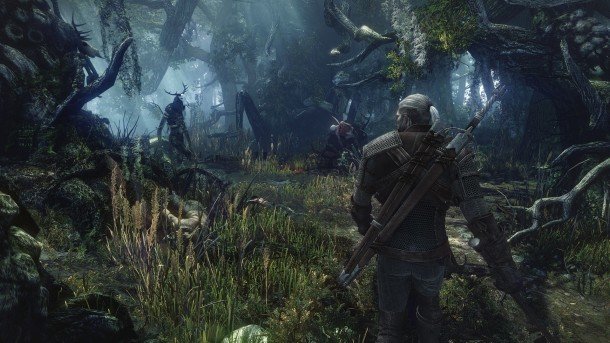
What happens to the town after Geralt leaves is even worse. A text screen reveals the aftermath of his visit: another massacre. The player unintentionally ruined a town in need of help, and consequences like this will be found throughout The Witcher 3. I'm curious to know what siding with the elders might have done—would the Leshen have murdered the whole town anyway? Was there any "good" outcome?
I'm glad the decision wasn't between "pick the red words to do something mean" and "pick the blue words do something nice," but I do wish the demonstration had shown more options. The murdered girl, for instance, was just a prop in the version I saw. Could we not have warned her? Told the young leader to spare her? Or changed our minds and offered our sword to the elders? Instead, the outcome appeared to revolve around once choice—who to speak to first—which suggests that there are only two distinct paths.
It's likely that there just wasn't time for the demonstration to explore other possibilities, and even if this particular sidequest does turn out to be a binary decision, it's boggling to think of how many decisions like this could exist in the game. How different will the world look after 100 hours of play?
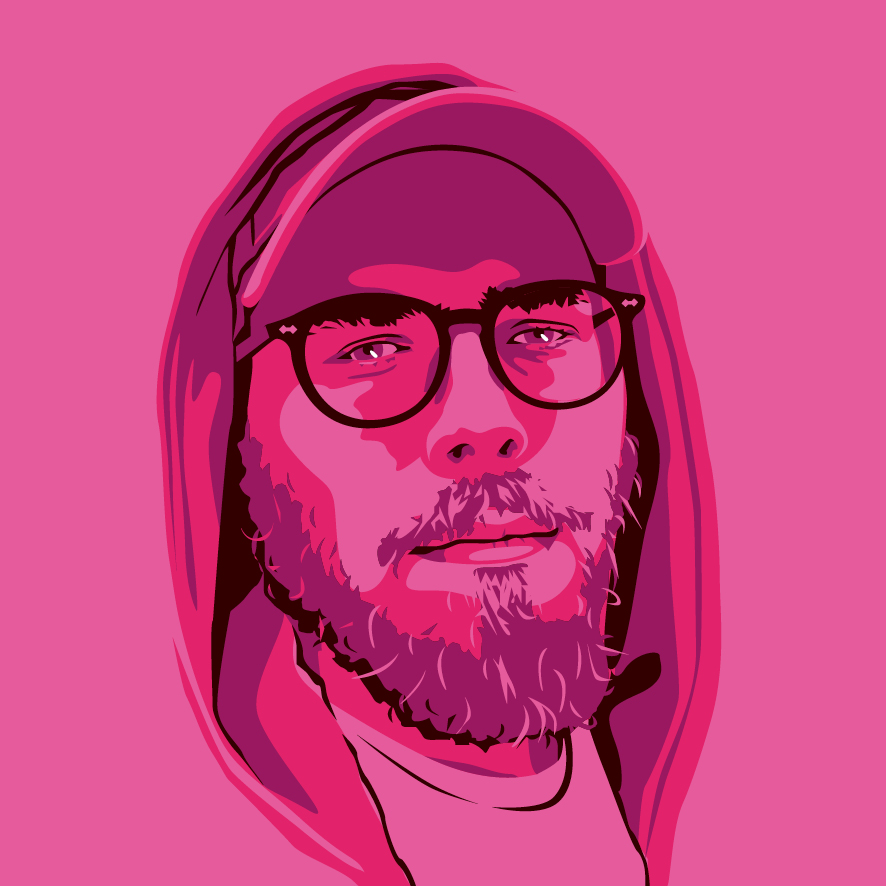
Tyler grew up in Silicon Valley during the '80s and '90s, playing games like Zork and Arkanoid on early PCs. He was later captivated by Myst, SimCity, Civilization, Command & Conquer, all the shooters they call "boomer shooters" now, and PS1 classic Bushido Blade (that's right: he had Bleem!). Tyler joined PC Gamer in 2011, and today he's focused on the site's news coverage. His hobbies include amateur boxing and adding to his 1,200-plus hours in Rocket League.

